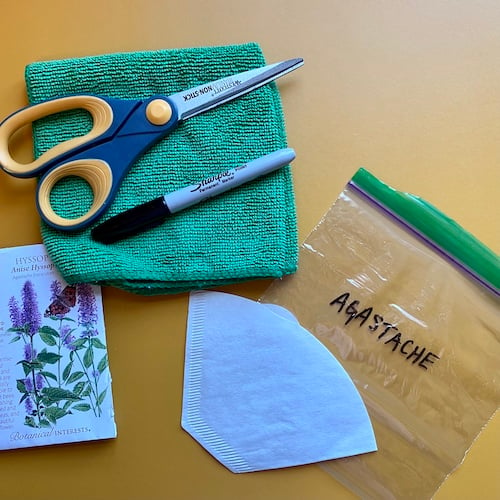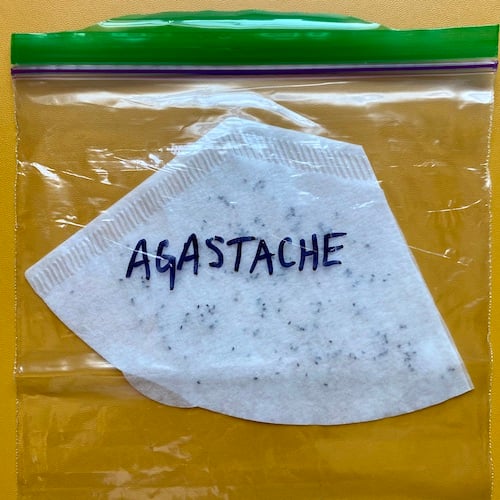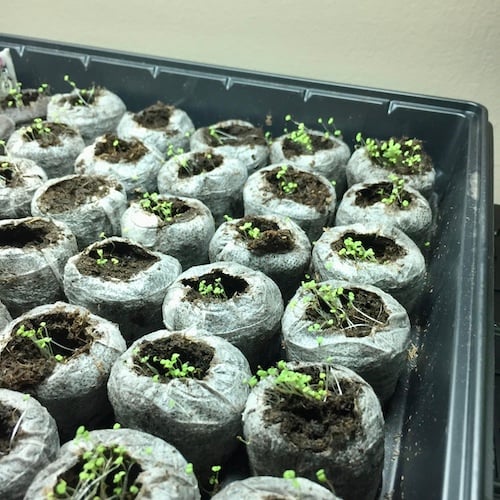This week: How to start native plant seeds indoors
Last week we sourced native seeds to plant in spring. This week, we'll begin with cold stratification and starting seeds indoors.
How to Cold Stratify Seeds Indoors
There’s a variety of ways to cold-stratify seeds indoors, but the simplest place to start is with a few coffee filters, Ziplock bags, and your refrigerator. Here’s how.

-
Wet the coffee filter then press it with a towel to remove excess moisture. You want the coffee filter to be damp—not dripping with water.
-
Distribute the seeds over half of the coffee filter. Seeds should be in a single layer and nicely spaced. No clumps of seeds!
-
Fold the filter over to trap the seeds between layers of moisture.
-
Place the seed-filled coffee filters into a labeled Ziplock bag and store it in the refrigerator.
-
After a week, check the seeds to see if they’ve germinated. Recheck weekly or every few days for progress.
-
Once sprouted, plant immediately outside or in seed starting pots inside.

Starting Seeds Indoors
The fastest way to get up and running with indoor seed starting is to invest in a seed starting kit that includes a reusable plastic tray, clear plastic dome (called a greenhouse dome or humidity dome), and peat pellets. Sometimes it will even include a grow light.

Here’s how to start seeds inside:
-
Hydrate the peat pellets or fill small pots with seed starting mix. If using seed starting mix, moisten the soil.
-
Follow the seed packet’s instructions for planting depth and plant a few seeds in each pot. Cover with the greenhouse dome and place somewhere warm.
-
Check daily to make sure the pots are not drying out. If needed, water from the bottom.
-
Once the seeds sprout, remove the dome.
-
Move the plants under the grow light for around 12 hours a day or place it in a very sunny window. Continue to monitor for water and water from the bottom as needed.
-
After the plants are an inch or two tall, are leafed out, and the last frost is over they are ready to go outside.
-
Harden off the plants by placing them in a sheltered spot outside during the day and bringing them inside at night for two or three days before planting outside.
When is the best time to start seeds? You can begin roughly 4-6 weeks before the last frost. In Pittsburgh our last frost is mid-May, so seed starting begins in early to mid-April.
Elsewhere:
Did you know that 7 states claim the Cardinal as their official bird? A 5-part series of articles from The Cornell Lab of Ornithology looks at U.S. and Canadian state/province birds and uses eBird data to suggest options that are more representative of the area with zero repeats. Start reading here.
Have a good week,
Julie